The impact drones are having in the surveying & mapping sector is arguably more significant than anywhere else. Experts have identified the surveying and mapping industry as the most profitable of all the segments, while users have been able to quantify the value of the technology related to a enabling a potential 90% in timesavings and an increase in safety. That’s just the beginning of the difference the technology is making for organizations that are especially small all the way up to the federal government.
To highlight how this value is being created, we’ve put together a list of 7 drone visionaries who are working in this field along with a bonus visionary whose interest goes beyond this specific application of the technology. Of course, all of the people on this list have worked in and are focused on a variety of industries and markets, which is just part of the reason that this list should simply be the starting place for anyone intent on discovering all of the people that are making a difference with UAV applications for surveying & mapping and the drone industry as a whole. If you’d like to learn more about these visionaries, you can discover the sort of insights some of these folks and plenty more will be looking to share at upcoming industry events.
To see all of the visionaries in our 7 commercial drone markets, click here.
 Benjamin Benharrosh
Benjamin Benharrosh
Who is he?
Benjamin is the co-founder of DELAIR, the first company in the world to achieve BVLOS certification for their fixed-wing drones. Since it began in 2011, the French company now has offices in France, Belgium, Singapore, China and the US with distributors in 70 countries. They’ve been involved with agriculture, railroad and utility companies, along with surveyors and construction since the 2016 acquisition of the Trimble UAV division. He is currently in charge of expanding DELAIR business in US and Canada and accelerating the development of its Image processing Software offer.
How is he making an impact?
DELAIR has been making headlines of late for a variety of reasons, whether that’s for being chosen as a strategic partner in the development of the Intel Insight Platform, or for the announcement of products like the UX11 or from positioning their drones as being among the easiest to integrate into any professional mapping toolkit. Their latest product that combines LiDAR and an RGB camera is especially notable though, and Benjamin has been invovled in all of these devleopments in one way or another.
The DT26X LiDAR from DELAIR has the potential to change how professionals approach data acquisition via a drone. The product’s combination of a sophisticated LiDAR sensor and an industrial grade RGB camera removes the ‘either/or’ decision of choosing between LiDAR and imagery data acquisition for geospatial professionals
What’s on the horizon?
Benjamin has talked about how excited he is to be part of the future of industrial asset inspection using AI-based image processing software, but he’s also highlighted how LIDAR drone data can be used right now for tasks like rail inspections. This simultaneous look at the present and future of the technology will become even more important as the pace of innovation and adoption increases.
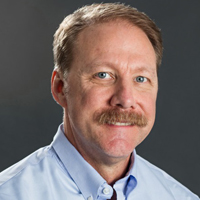 Dave Henderson
Dave Henderson
Who is he?
Dave Henderson’s career in the positioning business spans three decades. Prior to joining Topcon Positioning Systems, Dave held several industry positions as a District & Regional Sales Manager of Surveying, GPS & GIS mapping products. Dave’s primary focus at Topcon is sales and business development of unmanned aerial systems and LiDAR mobile mapping for the Americas.
How is he making an impact?
Throughout his career, Dave’s focus has been to specialize in assisting businesses, organizations and individuals to implement technology into existing workflows, thereby increasing their productivity and becoming more competitive in the current marketplace. His practical approach to the technology is evident in all of the talk about the data as opposed to the drone that has seen professionals become more focused on deliverables and ROI, rather than pictures and hardware.
What’s on the horizon?
Dave has talked about the importance of approaching drone adoption by getting users to focus on what they want to achieve with the technology, and that will continue to be a priority. The process of doing so opens up a series of questions that users and potential users need to continue to work through in a deliberate manner.
“What tasks will I use the UAV for?” Dave asks. “Can it help me complete my project faster, while improving my accuracy and safety? Is the information and deliverable better than my current methods? Will it help me manage my project more efficiently? Will it help me manage my risk? Are the results measurable? You need those answers to determine if the timing is right for implementation.”
These practicalities will be influenced by developments that Dave believes are just over the horizon. While it’s still in the emerging stage, AI/Machine Learning has the disruptive power to transform the sUAS industry. Driving specific business value with Autonomous Flights, Object Detection, and Automated Analytics Solutions, will give users the opportunity to save one of their most valuable resources: Time
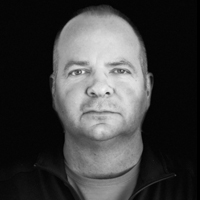 David Boardman
David Boardman
Who is he?
David Boardman drives the overall strategic vision and 3D product definition for URC Ventures, with Stockpile Reports serving as the first commercial venture of the organization. He brings over 25 years of software innovation and global application and deployment experience in the technology sector as a seasoned entrepreneur and Fortune 100 executive.
How is he making an impact?
Stockpile Reports is a full-service subscription using images captured from users’ drones and smart phones, and the platform’s focus on what it means to combine data from multiple places is something David has talked about extensively. He’s made sure users realize that while drones are providing access to data that was previously inaccessible, they’re ultimately really just one more mechanism for capturing and processing data.
Questions about whether or not an organization should create a drone program come up more and more frequently, and David has helped countless stakeholders pull back from that question and determine if doing so relates to their core business. These are the kinds of conversations that help ensure new technology like drones are integrated properly, and don’t turn into what’s ultimately classified as an unnecessary expenditure.
What’s on the horizon?
David believes that the cost of ‘locally piloted drones’ are now the bottle neck to drone operations at scale and the next big leap when it comes to deriving value from this technology will derive from “drones in a box” solutions that are fully autonomous and can operate BVLOS. That said, he’s recognized where and how drones can make a difference today, but he has also seen its’ limitations. It’s part of the reason he’s focused on helping users realize where drones can fit a given project or problem in the near term, but also that they have a better understanding of the bigger picture.
“Drones are not going to be your silver bullet to every problem,” David said. “They can definitely be the right tool for a given problem, and they’ve opened up new approaches that have created incredible efficiencies, but if you’re really focused on the problem of materials management, you can’t just consider a specific piece of hardware. How do you help solve that business problem? That’s what matters.”
 Grayson Omans
Grayson Omans
Who is he?
Grayson is CEO and co-founder of Phoenix LiDAR Systems and leads the development, sales, and marketing of airborne and terrestrial laser mapping systems for the company. His idea to mount a LIDAR sensor onto a UAV made Phoenix LiDAR the first in commercial UAV LiDAR, and helped to change the aerial mapping industry and redefine what it means to effectively utilize both technologies.
How is he making an impact?
Phoenix LIDAR Systems builds survey-grade UAV LiDAR mapping systems that can be customized with additional sensors for hyperspectral, photogrammetry, and more. The company is working to define when and why LIDAR is a fit to use on a drone in a way that will allow surveyors to see a return on their investment in terms of data acquisition, vehicle flexibility and on-site safety.
Ultimately, drones need to be thought of as tools just like any other that are available to surveyors, and Grayson has helped organizations and service providers understand what approach is going to be the best fit for their needs and requirements. Conventional aerial LIDAR service providers typically turn down projects that are less than 5 square kilometers due to high mobilization costs. With UAV LiDAR systems, service providers can quickly mobilize and complete this size job in less than a day. These are the distinctions Grayson helps define and refine every day for his customers.
Grayson has used Phoenix LiDAR’s head start to increase automation in the UAV LiDAR workflow to make it easier for companies to take advantage of both drone and LiDAR technology. As UAV auto-piloting features improved, Grayson led the development of flight planning software to help companies choose flight parameters that maximize their LiDAR data quality for that terrain. Other areas of automation include Phoenix LiDAR’s data acquisition software, and even post-processing software, all with the aim of automating the complex workflows that can be obstacles for clients in adopting UAV and unmanned LiDAR technology.
What’s on the horizon?
More and more people are asking questions about the difference drones can make when compared to traditional approaches, some of which relates to the “photogrammetry vs LIDAR” argument that is still pervasive. However, these types of arguments aren’t usually productive, and Grayson is working to change the narrative for anyone focused on one solution or another.
“It’s not that one is going to be better than the other,” said Grayson. “They all have their advantages and disadvantages. With LiDAR, of course, it’s more expensive and lower density than photogrammetry but of the two, it’s the only technology that will penetrate a tree canopy or map complex structures such as power lines.”
 Lewis Graham
Lewis Graham
Who is he?
Lewis is the President and Chief Technical Officer of GeoCue Corporation, a company whose focus is geospatial workflow management, particularly for LIDAR data processing. AirGon, LLC is the airborne micro-metric mapping subsidiary of the GeoCue Group, which is focused on creating metric mapping information from hyper-economical, small unmanned aerial systems (sUAS).
How is he making an impact?
Lewis’ career has spanned a variety of industries and technologies, but lately, he’s been focused on what it means to enable high accuracy mapping with DJI drones. After having done over 1,200 projects, some with quite a few larger companies in construction and mining sites, AirGon has been able to define what it means to get the most accuracy out of drones.
Much of his approach comes from the philosophy that a good camera on a low-cost platform is a lot better than a mediocre camera on a high-end platform. It also directly led the creation of the Loki System, which is AirGon’s third generation Global Navigation Satellite System (GNSS), Post-Process Kinematic (PPK) direct geopositioning system for drones that supports “plug and play” capabilities with DJI drones.
What’s on the horizon?
Lewis is focused on helping professionals that are getting started with drones to begin with products like the AirGon Mapping Suite, since they include everything someone needs to get their business running. Not understanding all of the nuances related to drone mapping causes many to avoid taking this step, and it’s something he’s working to change.
“I don’t think you do need a lot of domain expertise, and I think that’s proven out by the fact that we’ve internalized this for a number of customers,” said Lewis. “We have a client that is using it for mapping wood chip piles and log piles, but they don’t have domain expertise in photogrammetry. Yet they’ve had no trouble at all internalizing these operations.”
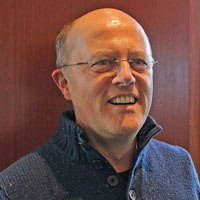 Mark Bathrick
Mark Bathrick
Who is he?
Mark directs a nationwide aviation services business for the U.S. Department of the Interior (DOI), which manages over 500 million acres of public land across the United States and its territories (about 1 in every 5 acres). In his current role, he oversees the safe operation of over 1,200 contracted and government-owned manned and unmanned aircraft across a wide range of business applications.
How is he making an impact?
The costs associated with starting a drone program are often cited as a significant challenge, and it’s why Mark’s success with starting a drone program with zero acquisition and maintenance costs are so significant. The efficiencies they’ve gained through the implementation of international quality management principles have freed up resources and allowed the department to repurpose positions to support the development and growth of the DOI drone program without having to bring on any additional personnel.
He has created the largest federal drone program outside of the Pentagon to perform tasks like dam inspections and wildlife surveys. The program’s commitment to bringing aviation, privacy, security and culture together has allowed them to come up with incredibly valuable measurables associated with the value the technology has created for them. Being able to accomplish traditional land management missions in 1/7th the time and 1/10th the cost with drones is among the most notable of his many successes.
Under his leadership, DOI has become a recognized leader in the domestic use and integration of UAS, and have not had one documented complaint from the public. It’s an especially remarkable achievement for an organization that has conducted 12,000 drone flights over public land, and speaks to their focus on the Privacy competency of the technology, which will be an issue that organizations of all sizes will need to address.
What’s on the horizon?
The DOI currently has a number of near-term developments that Mark is especially excited about. “Follow the Drone to Safety” are words that have already saved lives and might save even more, as they’re using drones not only to locate lost or stranded individuals, but to assist in guiding them to safety and first responders to their location. The DOI has also successfully conducted a series of tests of the capability to deliver emergency equipment like an Automated External Defibrillator (AED) in the field and have been working to “pay it forward” by actively engaging with 21 different Federal, State, and large Municipal governments to developing safe and responsible drone programs based on the Four Competencies (Aviation, Privacy, Security, Culture) that Mark has discussed in detail at industry events.
In addition to all of that, Mark is in the midst of several long-term evaluations that could greatly expand the footprint of the technology. He is exploring drone capabilities related to animal darting and netting from drones in order eliminate the safety risk for what are otherwise especially dangerous manned aircraft missions as well as the emergency extraction of injured personnel in all weather using drones. He’s also looking at what would be safer, more precise avalanche mitigation by using drones as well as the remote area logistics using drones to support natural resource, fire, and emergency management missions. Finally, he’s begun to look at how machine vision, machine learning, and AI data processing might be able to help the DOI respond to and take action for a given circumstance, all of which could help define what enterprise organizations need to consider in order to implement similar programs and capabilities.
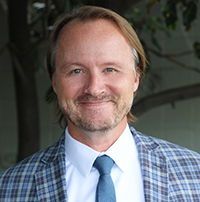 Sam Billingsley
Sam Billingsley
Who is he?
Sam Billingsley began working professionally on surveying and mapping projects in 1992 and moved into reality capture technologies in 2006. As Director of the Reality Capture Group at Ragan-Smith Associates in Nashville, TN., Sam is currently managing data from traditional survey crews, mobile & static LiDAR systems, photogrammetry, and Unmanned Aerial Systems.
How is he making an impact?
Sam made waves in the industry when he conducted a field test to show how accurate a UAV survey could be. He ran a few tests to see what was not just possible, but predictably achievable in a project setting, outside of a lab. He detailed what his process and results looked like, but came away from the experiment unconvinced that he needed to go “all in” on the technology.
The experience and feedback from that test compelled him to work towards building best practices for the use of UAVs for land surveying, and to explore how to improve his drone survey accuracy. The positive results of that have allowed him to add UAV-based services to his client offerings, and also to his arsenal of tools that are at his disposal even when that approach has not been requested.
What’s on the horizon?
Sam’s insights from his experiments and experiences with drone technology are being showcased in various settings this year, including a Surveying & Mapping workshop that will address using UAS systems for topographic measurement, movement monitoring, change detection, seepage detection, volumetric measurement and more. His openness provides users and potential users not only with a fresh perspective around where the technology can make a difference but also with a sense of what it means to reconsider any of the preconceived notions they might have to drone technology.
“I’ve moved from only using it (with qualifications) when directly requested to do so, to considering it as the most efficient tool for some applications in less than a year,” Sam wrote.
 BONUS VISIONARY: Gilles Labossière
BONUS VISIONARY: Gilles Labossière
Who is he?
Gilles is the Executive Vice President and COO of Parrot Group and recently became the CEO of senseFly, a commercial drone subsidiary of Parrot Group. He is focused on further boosting senseFly’s growth and leveraging its professional expertise across Parrot’s wider Business Solutions group to help simplify the collection and analysis of geospatial data so that drone solution users can make better decisions, faster.
How is he making an impact?
Gilles has recognized how the use of drones in surveying and mapping has grown dramatically in recent years, with industry professionals seeing the benefits offered by this technology more and more. Compared to traditional terrestrial techniques, drones have proven to be faster, safer and more cost-effective. These are distinctions that have and continue to be quantified with the Parrot Business Solutions portfolio.
While it’s simpler to think of drones in terms of specific applications like surveying & mapping, Gilles has also seen where and how these applications will impact and cross over with one another. Doing so will help define how users of all types can approach drone adoption.
“The agriculture industry will continue to be positively impacted by surveying and mapping drones,” Gilles said. “The demand for multipurpose drones like the Parrot Bluegrass, that offer automatic crop mapping of plots, will increase as farmers, agronomists and crop consultants require precise data collection abilities to improve their ROI.”
What’s on the horizon?
Changes to drone technology and the expectations around the successful integration of that technology will continue to evolve, and many of those changes will be driven by the kinds of solutions that are and will be available from senseFly.
“senseFly’s large-coverage photogrammetric mapping drone, the eBee Plus, can map more area per flight than any drone in its weight class, allowing operators to maximize efficiency and plan projects with confidence,” Giles continued. “We expect that more professionals in the surveying and mapping industry will rely on the Parrot Business Solutions’ robust range of products as these tangible benefits become more widely known. We also anticipate that more end-to-end solutions capable of producing survey-grade data outputs will gain market share, senseFly’s Survey 360 solution being a great example.”


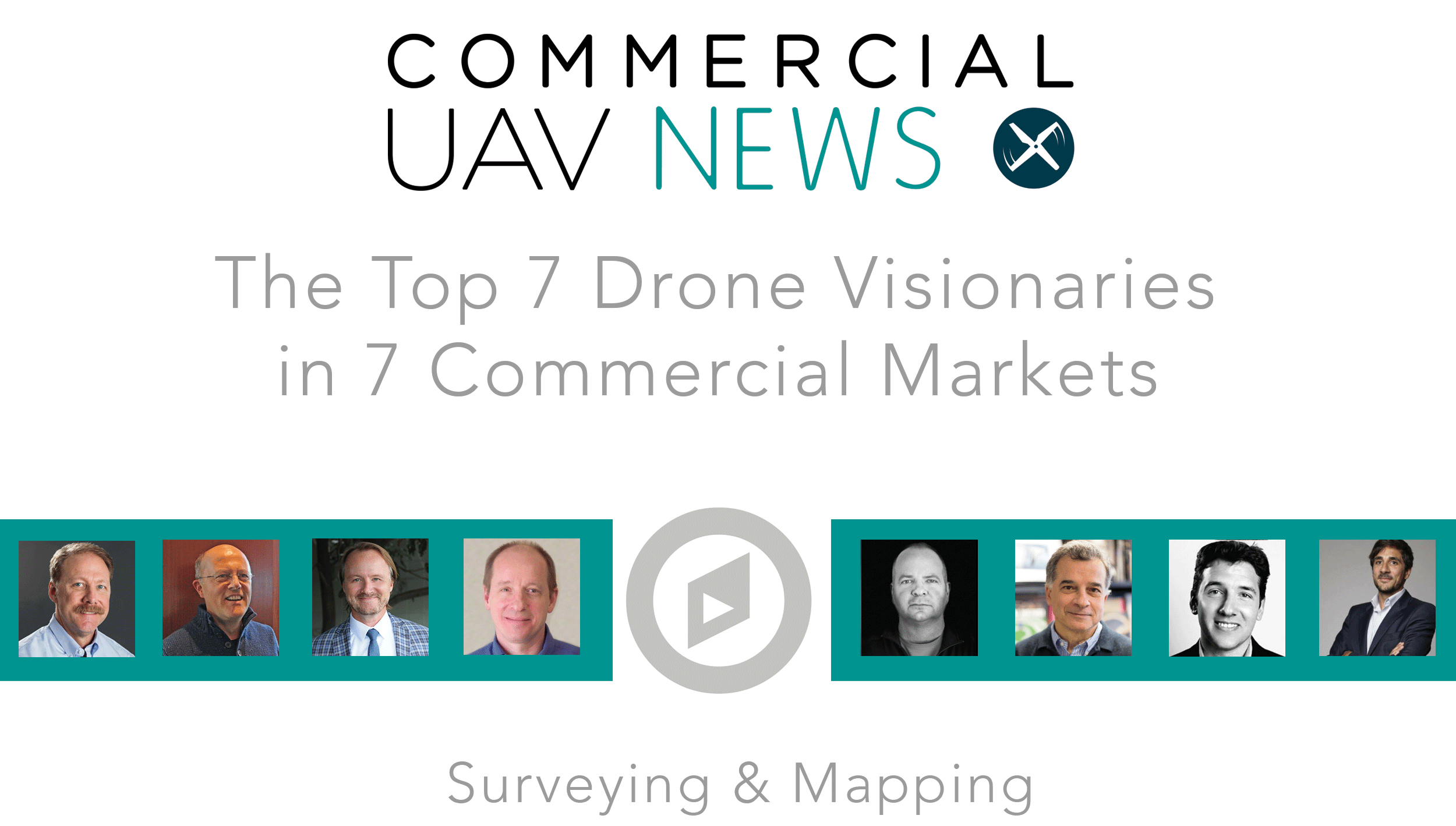












Comments